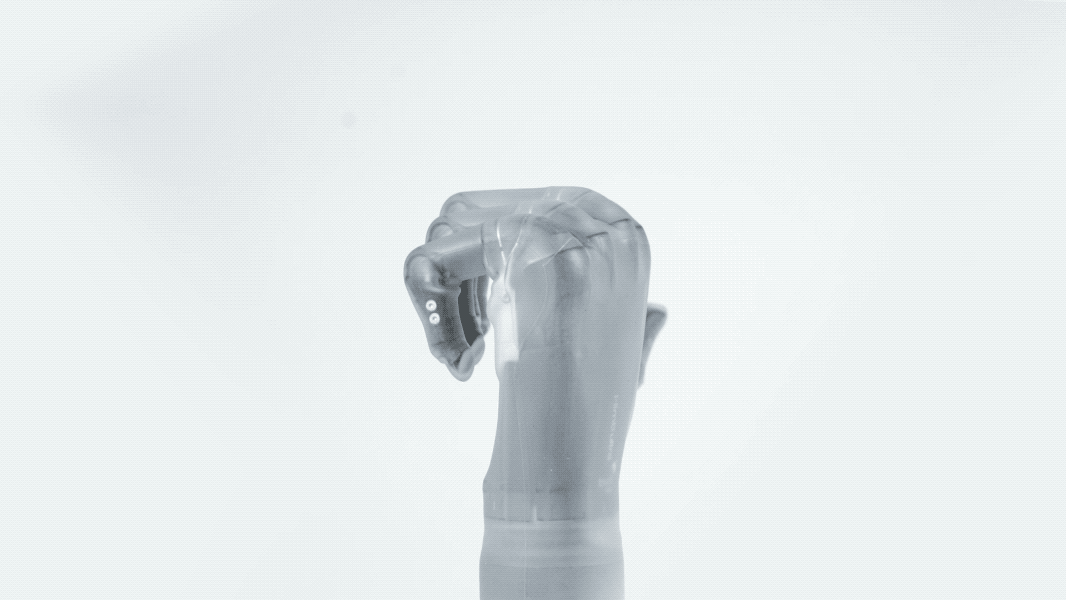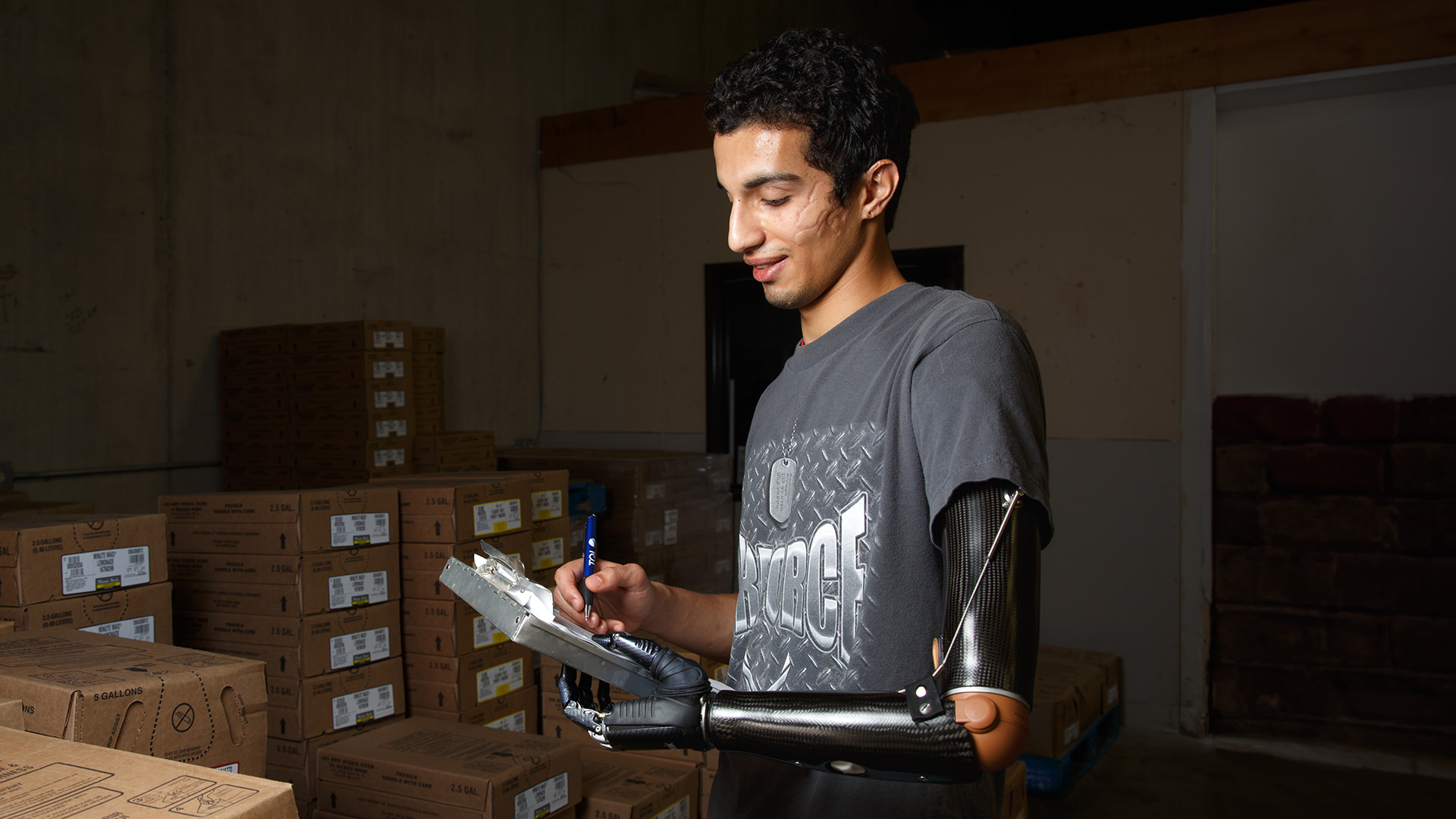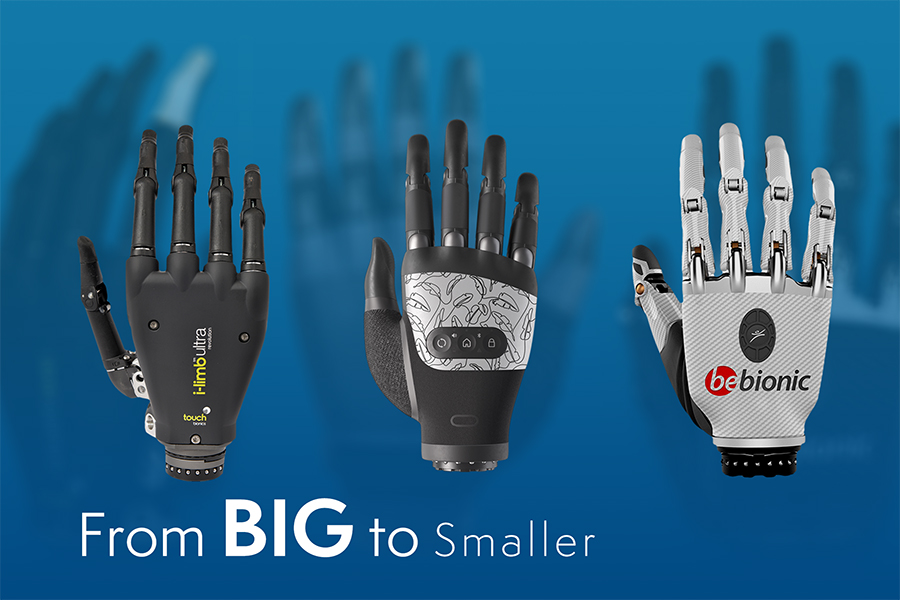We touched on myoelectric hands in our Introduction to Myoelectric Devices article, but now let’s take a closer look. Multi-articulating myoelectric hands are available from a variety of manufacturers in multiple sizes and configurations. Some of the most popular devices are:
- The TASKA Hand and TASKA CX
- The bebionic
- The i-limb
- The Michelangelo Hand
Along with other myoelectric devices, these multi-articulating hands are controlled by input from electrical signals generated by muscles in the residual limb. There are also similar devices, such as the i-Digits® Quantum, for people who have a partial hand amputation, such as with an amputation or limb difference that is through the palm.
Let’s start with what these types of hands have in common. All of the above offer articulating fingers, a rotating thumb (some of them offer this as a manual option, others offer this motion via a button on the hand, and others offer it via the muscle triggers mentioned above), motion similar to how the human hand works and the basic appearance of a hand. Additionally, they all have multiple grip patterns. They all link to a software program that your prosthetist can use to program it, and some of them link to apps that can be controlled by a phone. Some of them offer a variety of sizes, to better match the size of the person. Some of them are intended to be used with a glove, and those devices usually offer a variety of glove (cover) options — some come with transparent gloves, some offer black gloves, others offer flesh-toned gloves. Others do not use a glove, like the TASKA CX in the video below:
A lot of people who are considering prosthetic devices are initially drawn to these multi-articulating hands. We can’t blame them! They are cool and futuristic looking, and it’s definitely awesome to move something that’s outside your body with what seems like just a thought (none of these hands are there yet — rather, your brain is telling your muscles to contract and when they do, the electrical signals control the prosthesis).
For people with an above elbow limb difference, multi-articulating myoelectric hands can be combined with a body-powered elbow to make a hybrid prosthesis, as seen in the photo below:
But there are some considerations that everyone interested in these particular devices should keep in mind. For one, they have to be charged each night, the same for all myoelectric devices. In addition, nearly all of them cannot come in contact with water (the TASKA being the exception — it is water-resistant and submersible for a brief time). They are also less durable in comparison to other electric terminal devices like the rugged ETD or other prosthetic options such as body-powered devices. So if you do manual labor for your job or as a hobby, a multi-articulating hand may not be the best option for you, or they should be considered in addition to a sturdier option — see our article about needing more than one prosthesis.
Some of the hands featured in this article come in different sizes to accommodate different body types and size differences between men and women. You can learn more about sizing options in our article Terminal Devices for Women and People with Smaller Hands.
Lastly, today’s multi-articulating hands don’t work exactly like a sound human hand — that is, with these hands, the user doesn’t actively move each individual finger. They switch to a particular grip pattern and then when they control the hand, it opens or closes in that specific grip pattern. You can see this in action in the gif below (the hand featured is an i-limb).

If you are interested in a myoelectric hand, we would love to hear from you! We want to be supportive and help everyone choose the prosthetic option that is right for them. If you have experience with a myoelectric hand, or hands, and would like to share that knowledge with your peers, please comment below. Thanks for learning more about myoelectric hands with us!







%20President%20and%20Senior%20Clinical%20Director.jpg?width=600&height=600&name=John%20M.%20Miguelez%2c%20CP%2c%20FAAOP(D)%20President%20and%20Senior%20Clinical%20Director.jpg)










Comments (2)